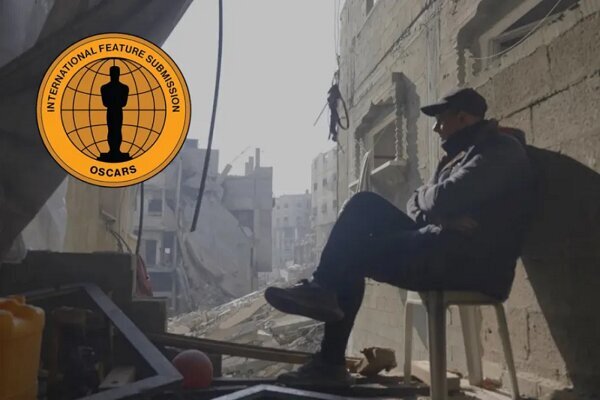
According to the news agency Khabar Online, pieces of life and death, which were prepared and put together from the front line of the genocide in Gaza by filmmakers under siege, became one of the 15 initial nominees of the 97th Oscar.
According to the Mehr News Agency, quoted by Variety, a filmmaker who burns his kilt to create some heat, a school teacher who is trying to feed his students, a stand-up comedian who only sees a bombed out space when he arrives at the venue. There are a number of topics that are included in the film “From Ground Zero” representing Palestine, which is now one of the 15 contenders for this year’s international Oscar. The film presents a collection of 22 directors’ memoirs from Gaza, shot in between (and sometimes, during) Israel’s bombardment of Gaza, to paint a portrait of life under siege. Each short segment of this film is unique in its concept, and at the same time, it depicts the violent routine of life with a shared resilience and need to document.
This collection, which was excluded from the Cannes festival this spring for political reasons, was shown right outside the festival as a protest act to show a creative and rebellious act in the face of genocide. From Ground Zero, coordinated and financed by Palestinian filmmaker Rashid Masharawi, brings dozens of emerging artists to the stage to present digital memories and events of their lives in the Gaza Strip. The length of each short film is from a few minutes to nearly 10 minutes. Some of them are charming and haunting, like Rima Mahmood’s debut film Selfie, about a young woman who tries to hide her stress by wearing make-up and maintain a sense of femininity while the world is falling apart. slow down Others, such as “No Signal” by Mohammad Al-Sharif – which takes place immediately after “Selfie” – use the rubble of collapsed buildings taken from reality for the performance scene.
None of these stories are inconsistent with each other or with the overall project, and their diversity is an important point, as each depicts a different aspect of social and personal life in the reality of its creators’ new lives, whether they deal with death abstractly— Like in Karim Satorum’s “Hell’s Paradise,” where a man sleeps in a body bag to keep warm — or look back with sadness at his new world. Only one of the films in this series remains incomplete, and its completion is done with the presence of the director, who sits in front of the camera to talk about the details of the continuation of his film, which he had in mind before his loved ones were killed.
While most of the films take place in the present, a number of the shorts have brief flashbacks or images of life before the start of the Israel-Hamas war, blending the project with the subjects’ social lives, yet “from ground zero”. Among its many cuts in black that appear between each short film, it tells the story. Artists who are now faced with brutal extreme behavior, but have the feeling of being imprisoned and familiar with war from years and even decades ago; The theme that is depicted in the final film “Awakening” by Mehdi Karire with puppets in a poetic way.
A large part of the deplorable situation in Gaza has reached the social media, one of them is the rescue of a man from under the rubble of his house, which has become the subject of one of the films, but most of the short films in this series take a deep look at the lives of Gazans and the psychological impact of the miserable situation. They are depicted and along with it, they also tell about their hope in the face of torment.
These stories and their nature are particularly reminiscent of the images recorded on celluloid of the Holocaust and the tradition of photographers such as Henrik Ross and Mendel Grossman of the Jewish ghettos. It is Poland that not only documented everyday life with their cameras, but imbued it with a familiar and poignant humanity. “From Ground Zero” shows history repeating itself and the tragedy that is happening right before our eyes.
24457
